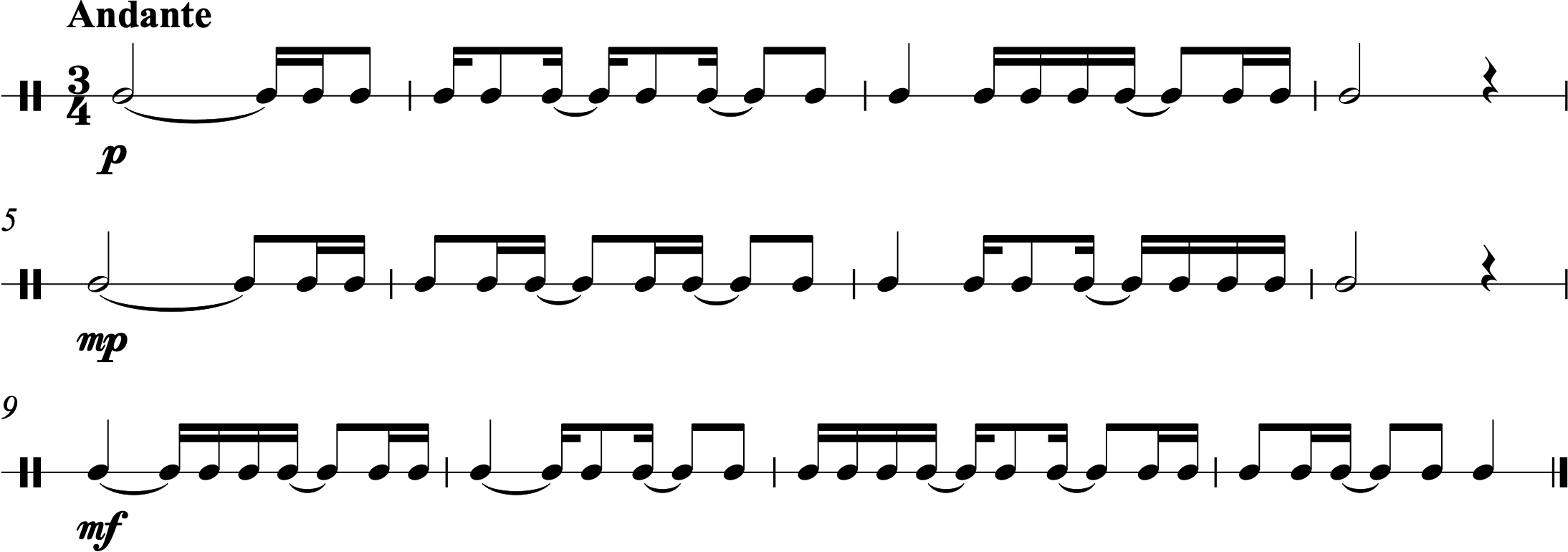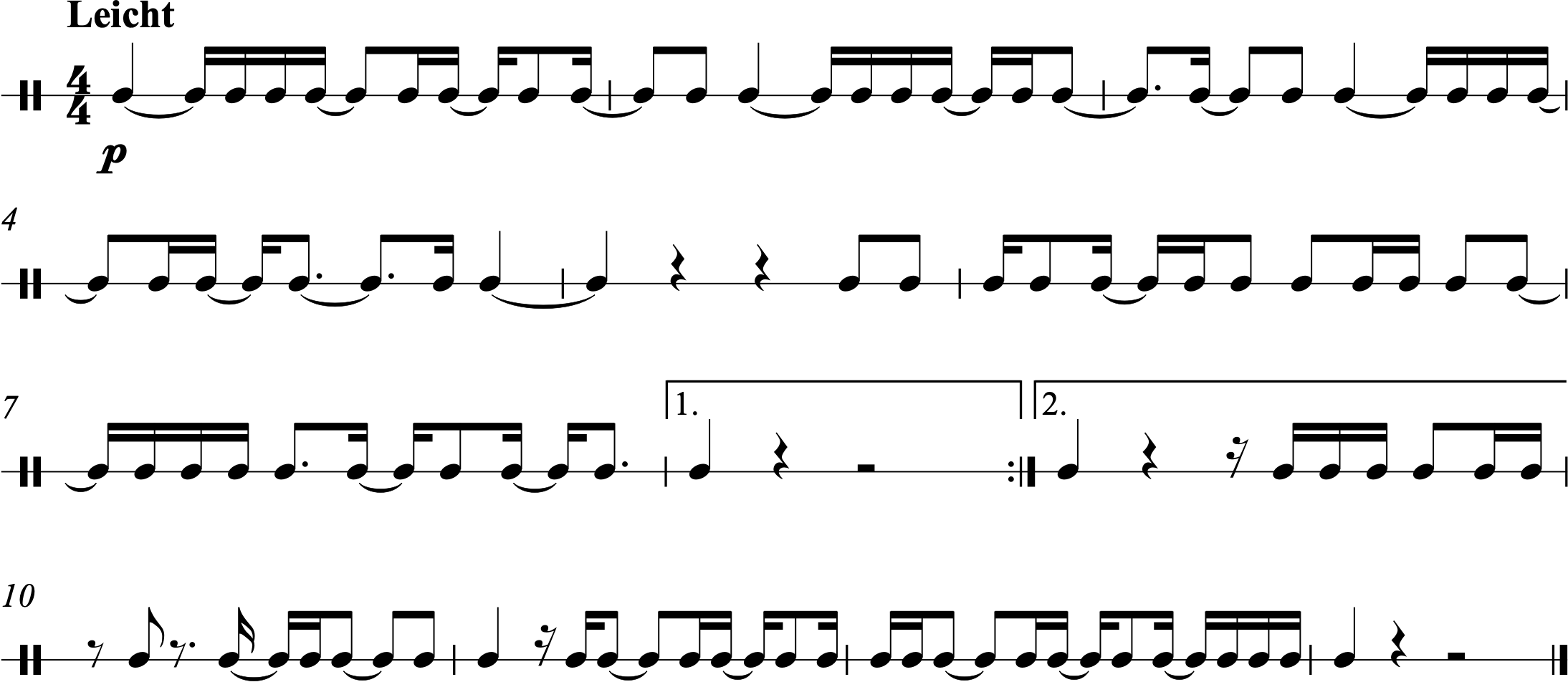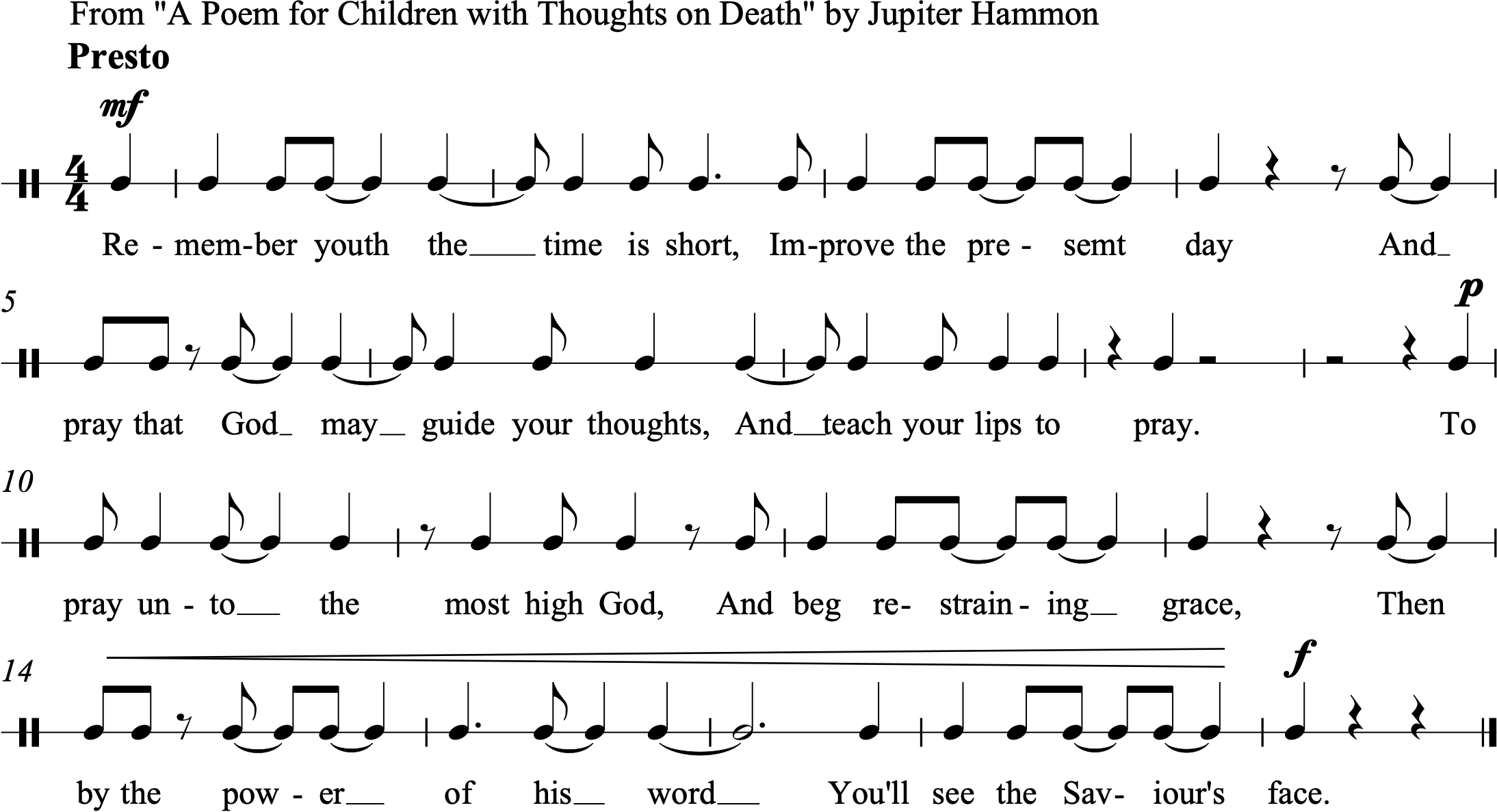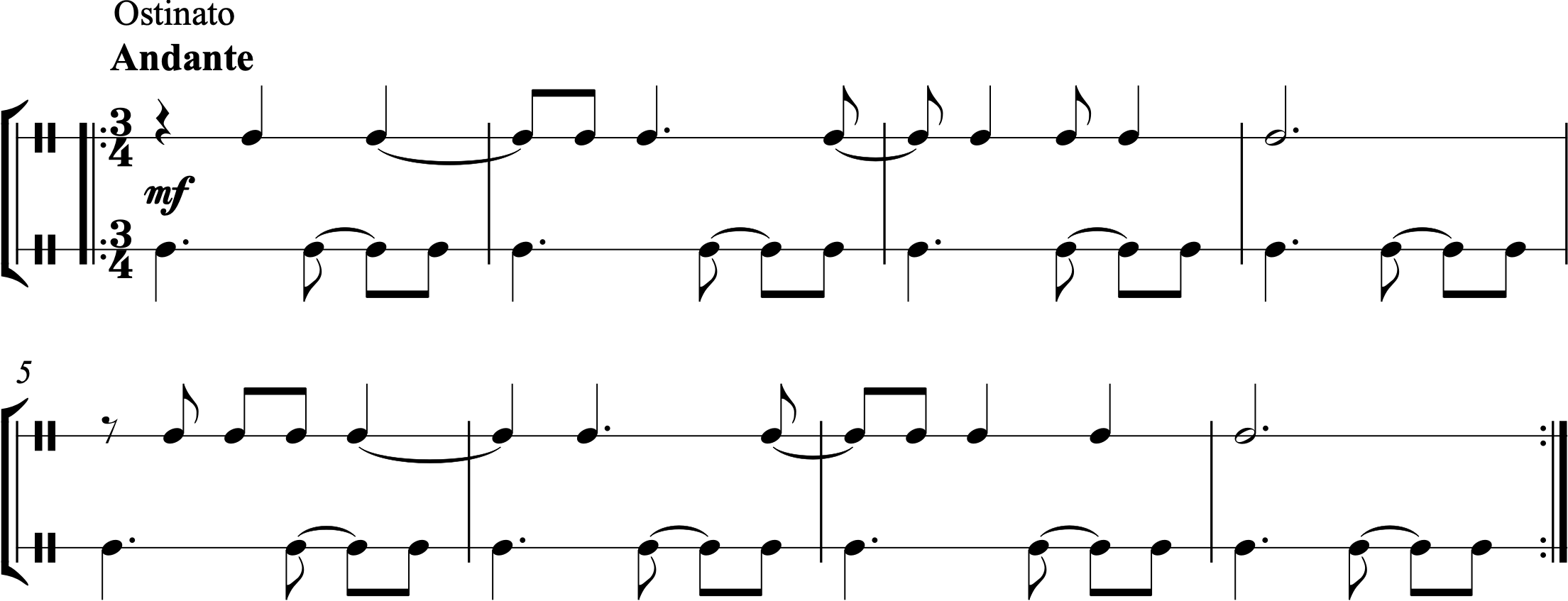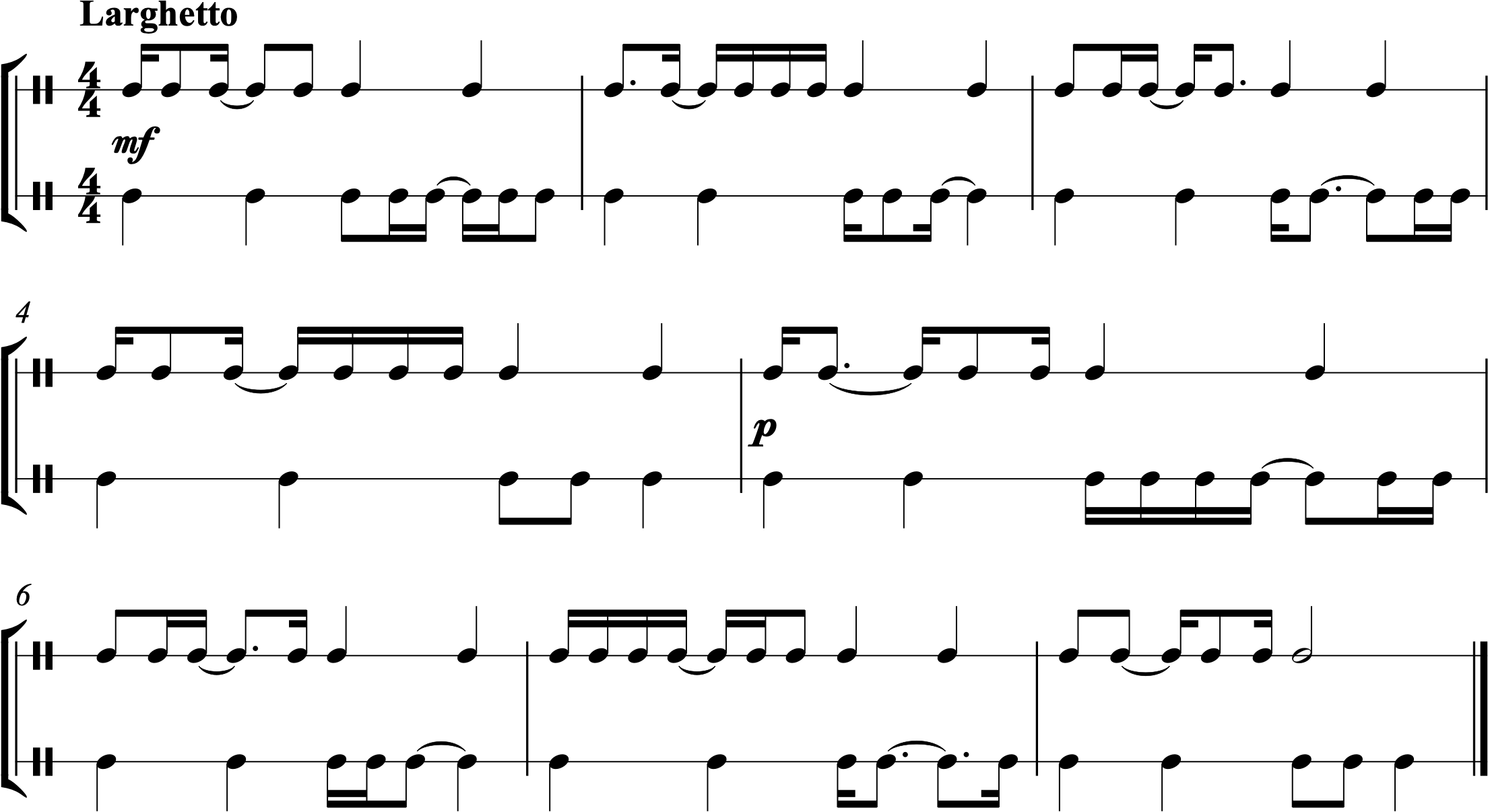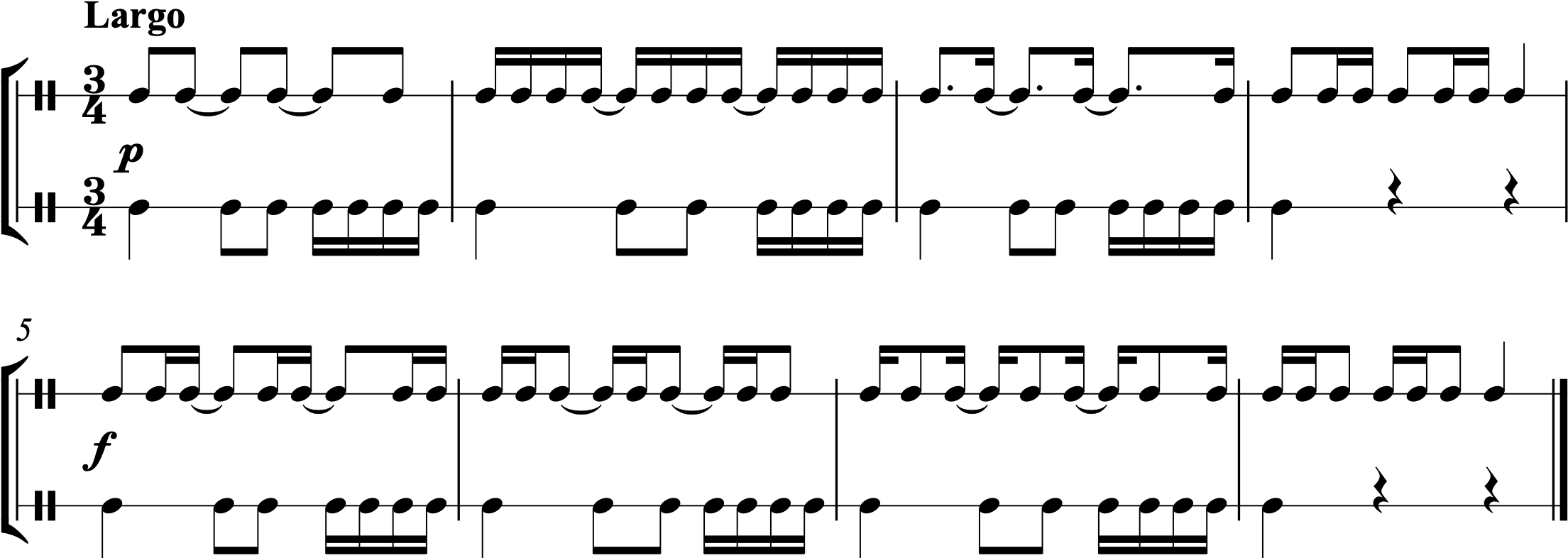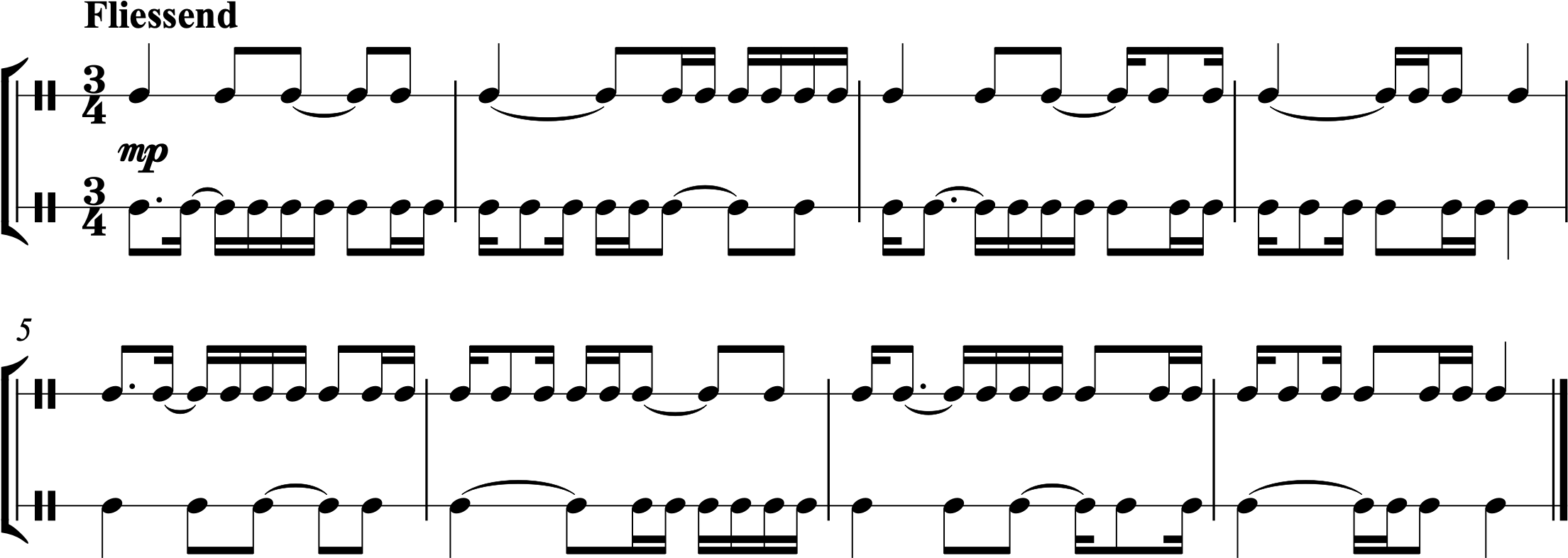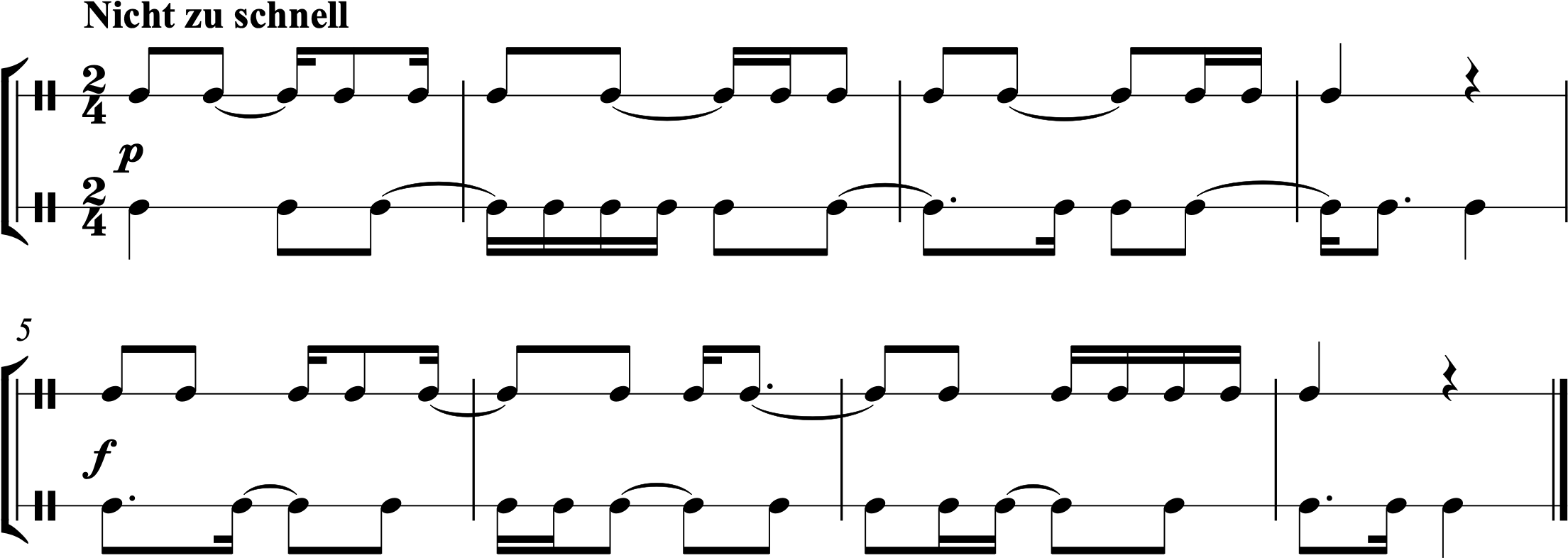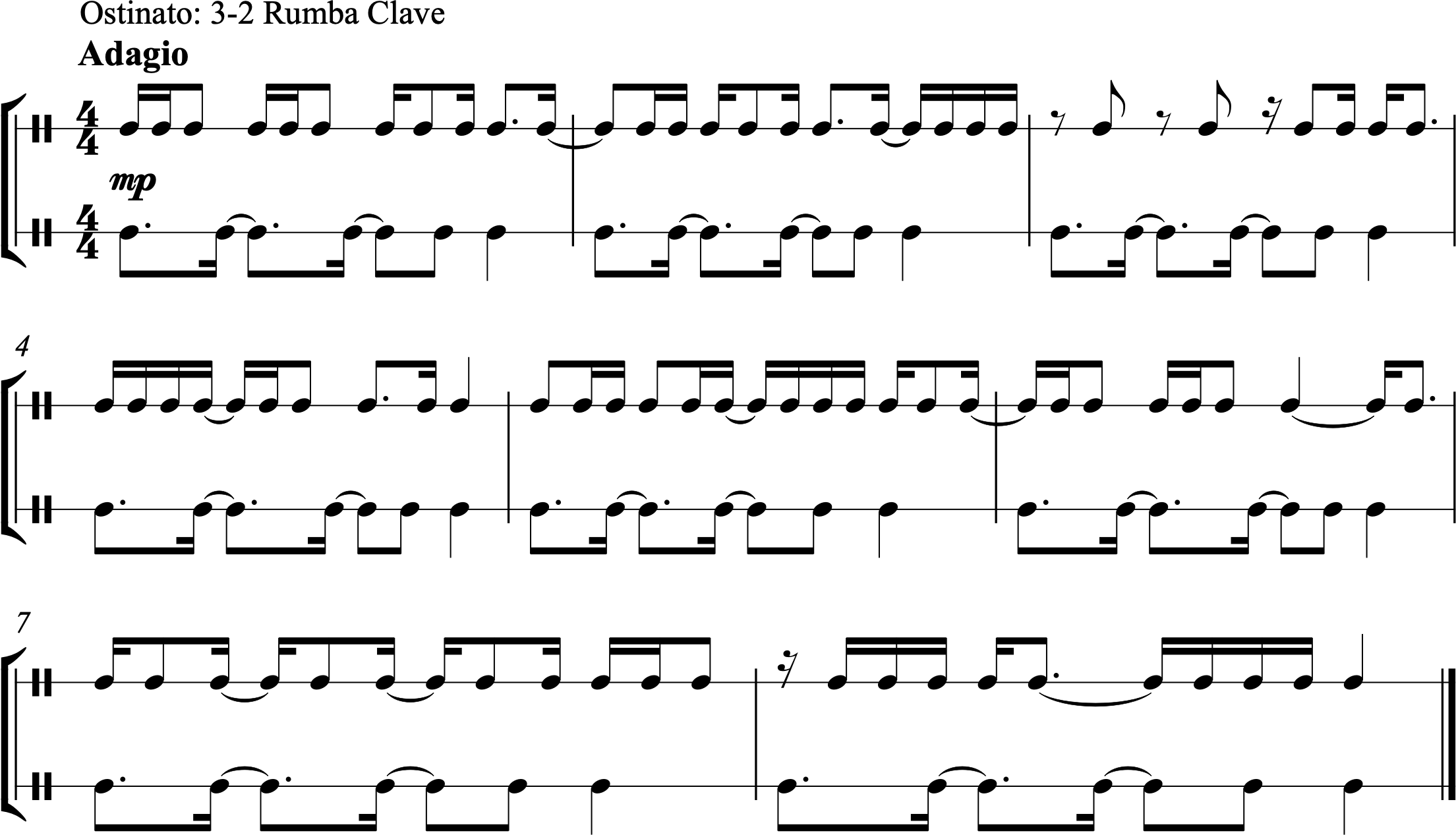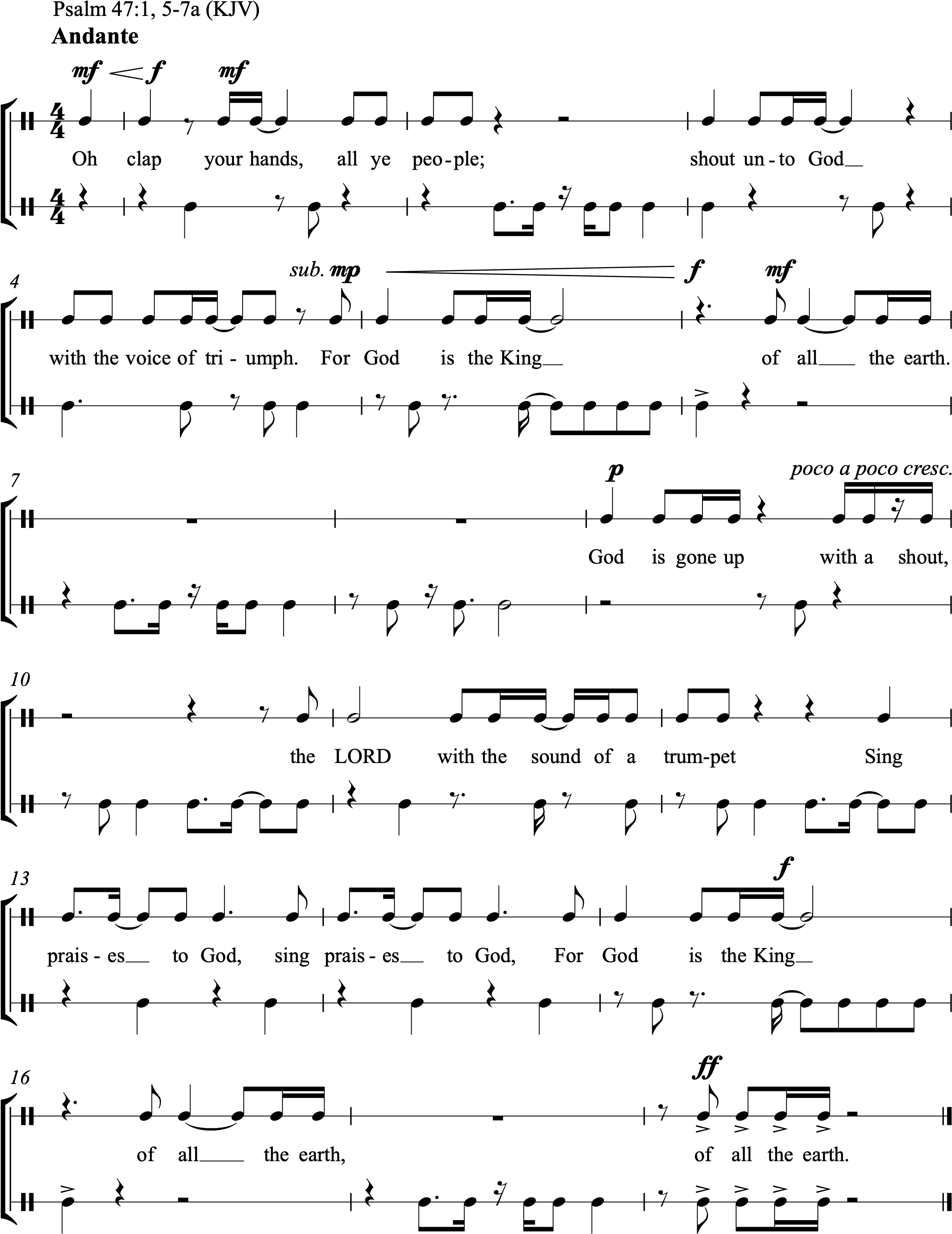Chapter 8: Simple Meter—syncopation
About This Chapter
About This Chapter: In this chapter, we will focus on syncopation in simple meters. Before exploring syncopation, it’s important to understand the idea of a metrical accent. In a 4/4 measure, beat 1 has the strongest metrical accent. It’s the downbeat of the measure and important things (like harmonic changes and cadences) often happen then, making it sound accented (or more prominent) compared to the beats around it. Beat 3 also has a metrical accent—less than beat 1, but more than beats 2 and 4.
Syncopation is what happens when we go against that typical accent structure. More specifically, it describes rhythms that stress a weaker part of the measure (such as a weak beat or something off the beat) instead of the stronger parts. Take a look at the example below. In measure 1, there are attacks on the “&” of the beats and not on beats 2, 3, or 4. This means the off beats are accented instead of the beats. In measure 2, the focus on the “e” and “a” subdivisions instead of the beats or “&s” creates a syncopation at the division level.
 When performing syncopated examples, it is crucial to keep track of the underlying meter grid yourself. Conducting or tapping along to the beat, the division (eighth note), or the subdivision (sixteenth note) may help you keep a steady pulse despite the rhythm fighting against the natural accent pattern of the meter.
When performing syncopated examples, it is crucial to keep track of the underlying meter grid yourself. Conducting or tapping along to the beat, the division (eighth note), or the subdivision (sixteenth note) may help you keep a steady pulse despite the rhythm fighting against the natural accent pattern of the meter.
Section A—Syncopation that obscures internal beats
Practice
Practice A:
 Practice by performing along with this audio file, which features a metronome click and the notated rhythm. You will hear one measure of wood block to establish the tempo before the exercise begins.
Practice by performing along with this audio file, which features a metronome click and the notated rhythm. You will hear one measure of wood block to establish the tempo before the exercise begins.
Next, try performing along with this audio file, which features the notated rhythm but no metronome click. You will hear one measure of wood block to establish the tempo before the exercise begins.
1.
2.
3.
4.
5.
6.
7.
8.
Section B—Syncopation that obscures downbeats
Practice
Practice B:
 Practice by performing along with this audio file, which features a metronome click and the notated rhythm. You will hear one measure of wood block to establish the tempo before the exercise begins.
Practice by performing along with this audio file, which features a metronome click and the notated rhythm. You will hear one measure of wood block to establish the tempo before the exercise begins.
Next, try performing along with this audio file, which features the notated rhythm but no metronome click. You will hear one measure of wood block to establish the tempo before the exercise begins.
9.
10.
11.
12.
13.
14.
15.
16.
17.
18.
19.
20.
21.
Section C—Two-part rhythms featuring syncopation
22.
23.
24.
25
26.
27.
28.
29.
30.
31.
32.
33.





